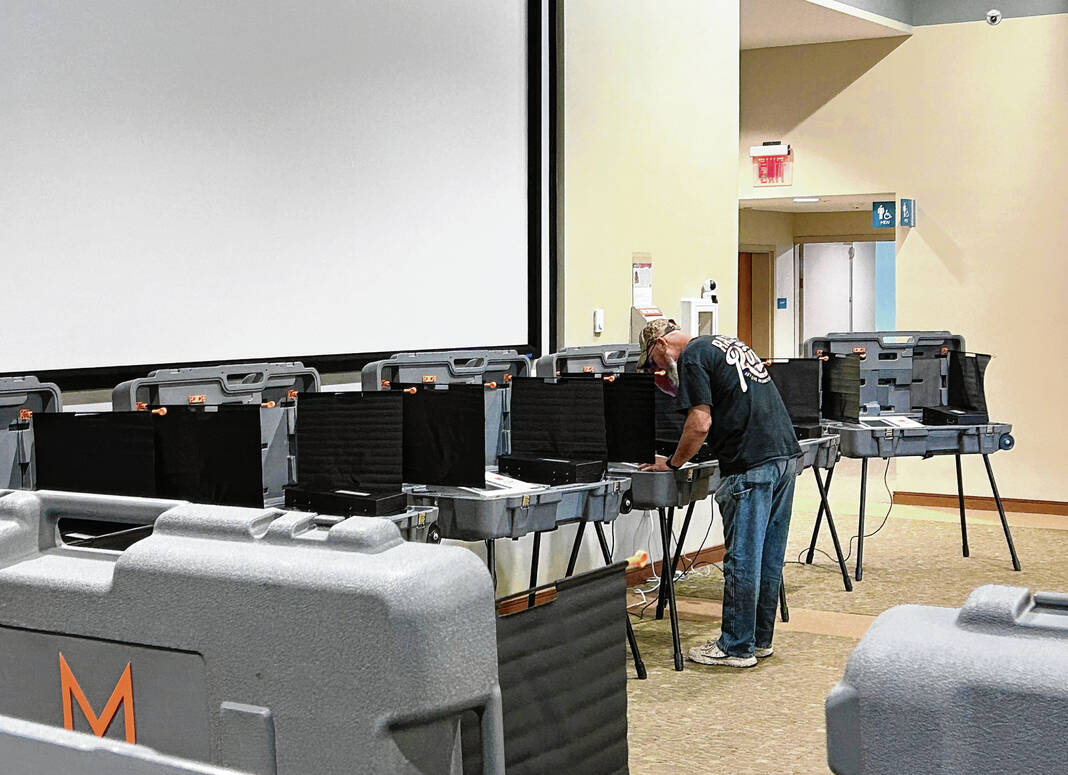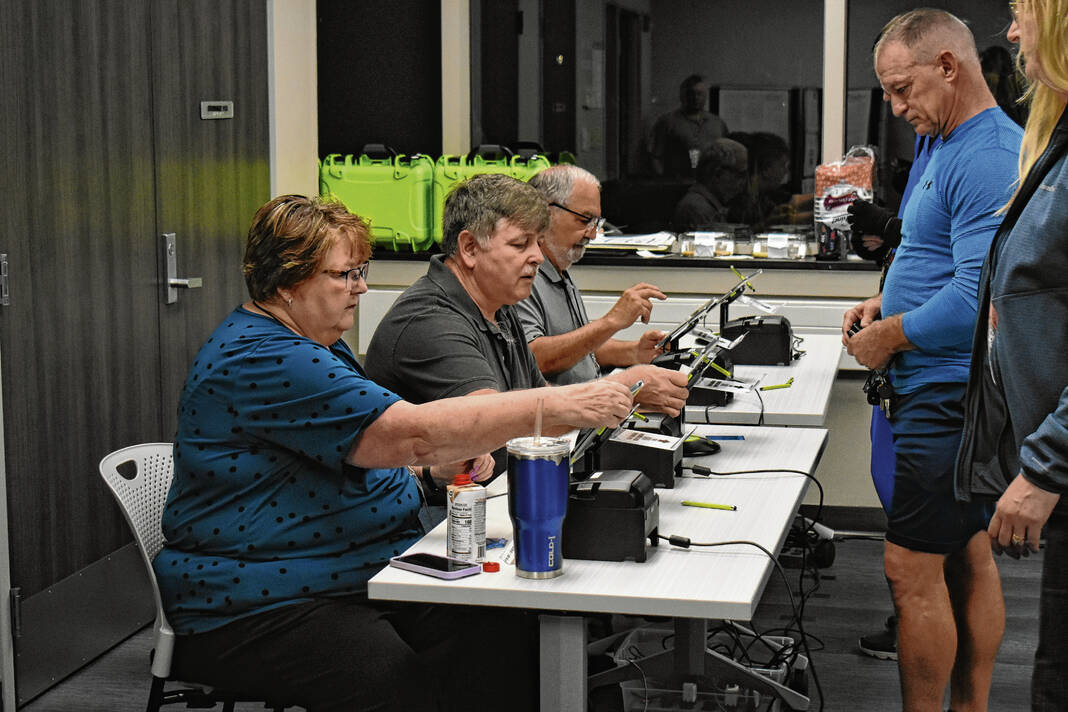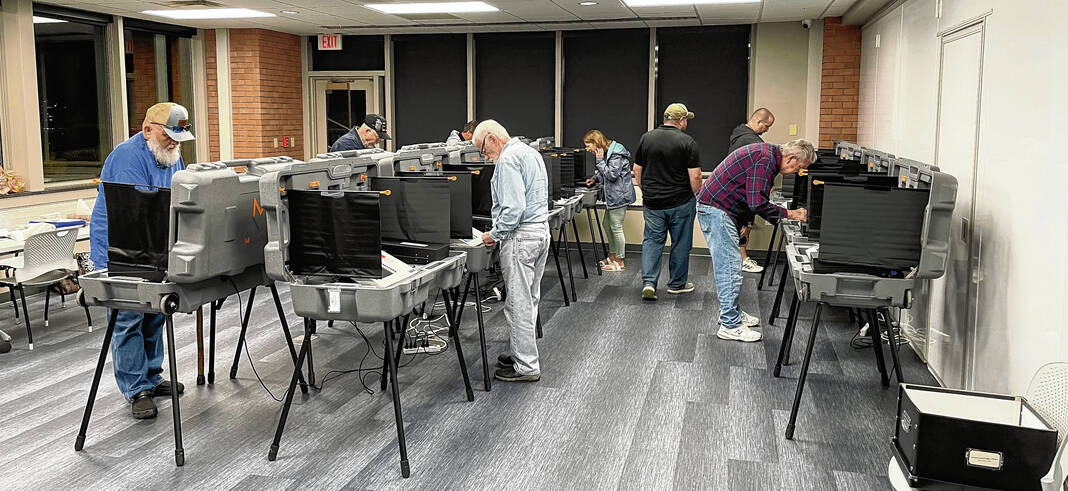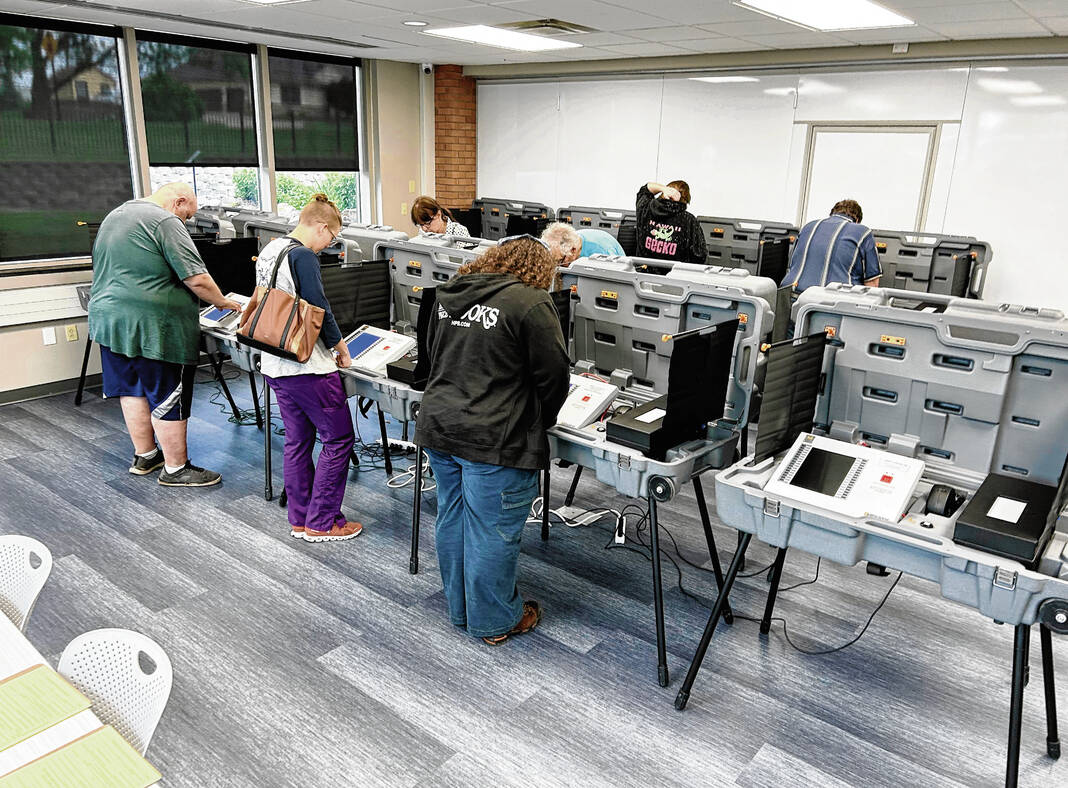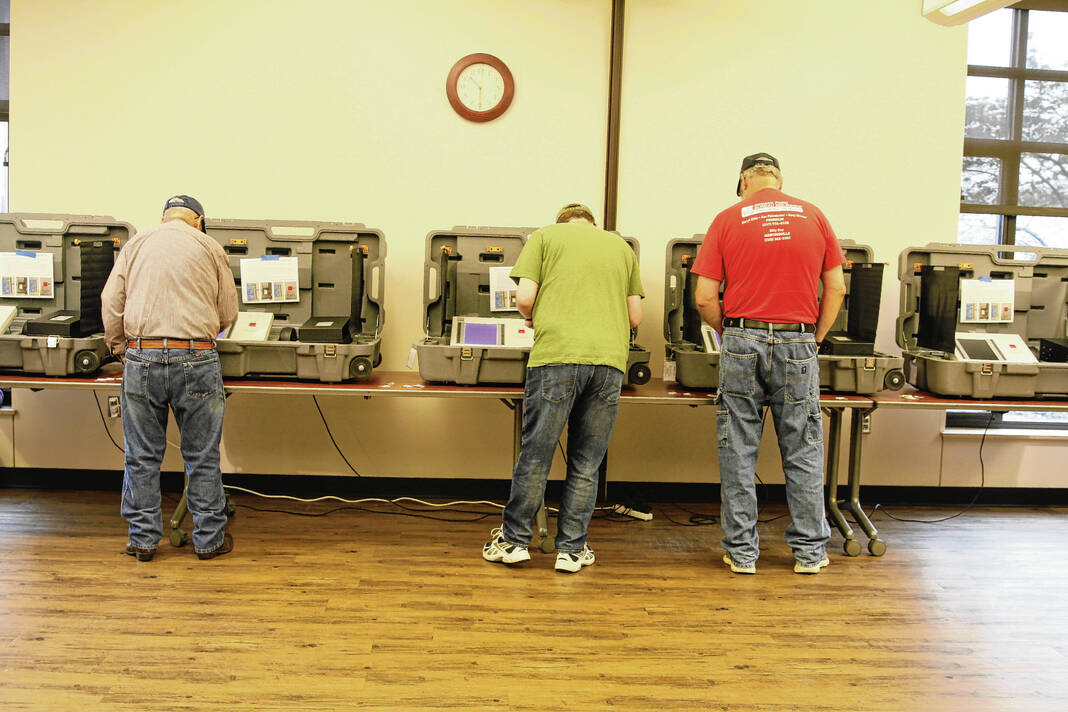All of the ingredients for a big turnout in Tuesday’s primary election were there.
This was a presidential election year, with a ballot filled with contested races statewide and locally, including multiple candidates running for governor, U.S. Senate, U.S. House of Representatives, county council and more. Preparations were made for a crush of voters to pack polling places around the county.
But it never materialized.
Turnout for the election was the lowest it’s been for a presidential primary in the past 24 years, with 16.2% of eligible voters casting a ballot. Despite an exciting slate of contested races, voters were not compelled to head to the polls.
“I was hoping for a bigger turnout of course. We have almost 120,000 registered voters and only had 19,404 voters vote,” said Trena McLaughlin, county clerk. “Not sure why voters didn’t get out and vote. I think in part the presidential candidates for the (Republicans) and (Democrats) were already picked.”
At first glance, this primary election was stacked.
Republican voters had to choose between six candidates for Indiana governor, a seven-way race for Indiana’s Sixth Congressional District, two candidate races for county commissioner and coroner, and six candidates for three at-large nominations for county council on the ballot. Voters who live in southern White River Township, along with Union and Hensley townships, also had a two-way race for Indiana Senate District 37. There was also a contested race for Prince’s Lakes Town Council, with five candidates seeking two at-large seats.
Local Democrats have two contested races for the primary. There is a two-way race for the U.S. Senate, as well as four candidates for three Johnson County Council nominations.
The contested races for both major parties come despite their presidential picks being all but decided. Incumbent President Joe Biden, a Democrat, is expected to have a rematch with former President Donald Trump, a Republican.
Still, predicting turnout in a primary election can be tricky, said Laura Merrifield Wilson, associate professor of political science at the University of Indianapolis.
“Though it’s a primary, it should be one we see a boost in numbers, because there was real competition on the ballot, and that does help voters get engaged and motivated,” she said.
In Johnson County, and elsewhere in Indiana, that wasn’t the case.
A total of 119,928 Johnson County residents were registered and eligible to vote in Tuesday’s election. Prior to Election Day, 7,015 had cast their votes, either through a mail-in absentee ballot or in-person early voting, according to Johnson County Voter Registration.
Presidential election years typically have higher than normal turnout. The last presidential primary in 2020 saw a turnout of 21.5%, though it was affected by delays caused by the COVID-19 pandemic. The 2016 primary saw a turnout of 39.8%, data shows. Turnouts for the 2012 primary was 25.2%, while in 2008 it reached 38%, as well as 24% in the 2004 primary.
The story was the same at voting centers throughout the county — turnout was steady, but not overwhelming.
At Scott Hall in the Johnson County Fairgrounds, the response had been a little disappointing by early afternoon, said Angie Turnmire, an election inspector. A small line formed at the building’s entrance for the first time at about 1:30 p.m. For most of the day, turnout has been steady with one or two voters at a time, Turnmire said.
Likewise, at the two vote centers at Mt. Pleasant Christian Church, voters rarely had to wait for more than a minute or two to check-in. The polling place had 25 voting machines set up, so plenty were empty during the day.
“It’s starting to pick up, but I’d say it’s down from where a typical presidential primary would be,” Andy Fisher, a poll inspector, said shortly before 4 p.m. “There have been hardly any lines.”
Low turnout was common across Indiana. According to the secretary of state’s office, as of 3 p.m. Wednesday with 98.5% of precincts reporting results, statewide turnout was at 19%.
Pinpointing what led to the low turnout is difficult, Wilson said. But, counter-intuitively, part of it could be explained how many candidates were up for some of the more high-profile races.
“There were lots of candidates on the ballot, and we know that political fatigue is a real phenomenon. There’s a lot of research that shows that when a voter is looking at eight different candidates, that’s too many,” she said. “I think that can depress voter turnout. I recognize and did hear that from some voters who didn’t feel well-informed to make a good decision.”
Another factor that depressed Election Day turnout was likely the weather. Forecasters warned of violent storms passing through Johnson County throughout the day, one wave in the morning and another in late afternoon and evening. Tornado watches were issued, and people were warned to be aware.
“For folks who were waiting on Election Day and going to go to the polls after work, I don’t what percent that would be, but when you’re looking at all of these tornado warnings and watches and all of that, that’s next-level democratic commitment to go out in that,” Wilson said.
Despite a lower-than-expected turnout for the primary, November’s general election will likely far surpass that, Wilson said. The presidential rematch between Biden and Trump is gearing up to be very heated, and with other contested high-profile offices on the ballot, emotions should be high.
“There will be some voters who say, ‘I don’t like either (Trump or Biden), I’m not participating.’ But there will also be voters who say they might not be my favorite candidates, but they much rather prefer one or other,” she said. “The national politics and the nationalization of politics will help drive people out (to vote).”
McLaughlin and the elections office staff are already thinking about all of the plans for November, and how to handle what will certainly be a larger turnout.
“We are already preparing for the fall and will be ready,” she said.
BY THE NUMBERS
Johnson County voter turnout
Presidential primary years
2024: 16.8%
2020: 21.5%
2016: 39.8%
2012: 25.2%
2008: 38%
2004: 24%
2000: 16%
— Information from Johnson County Voter Registration and Daily Journal archives


